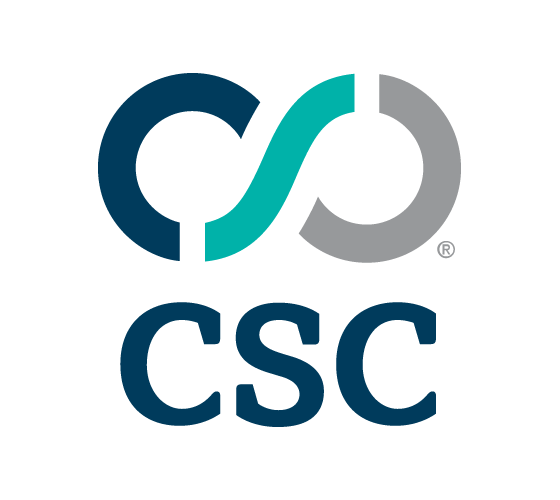


|
||
|
||
Artificial intelligence (AI) has become synonymous with innovation, transforming industries at an unprecedented pace. While some may frame AI as a groundbreaking development of our time, it’s essential to acknowledge that its roots run deep. AI has evolved immensely from early tools like the abacus to present-day GPU-driven large language models. What sets the current landscape apart? The sheer scale of data, computational demand, and complexity of workloads.
The digital era is redefining how we process, store, and leverage data, but with this transformation comes a story of both opportunity and challenge. Imagine enterprise leaders—CEOs, CIOs, and CTOs—standing at the forefront of innovation, navigating an increasingly complex landscape of AI workloads and data-intensive operations. Picture data center managers grappling with growing compute densities and unpredictable workload spikes as their facilities hum with activity. The strain is palpable as energy demands soar to unprecedented levels, forcing a reckoning. Yet, within this pressing challenge lies an opportunity to rethink the way forward. By adopting sustainable and forward-thinking strategies, we have the chance to rewrite the narrative—a future where data centers are not just powerhouses of computational excellence but also models of energy efficiency and environmental stewardship. This is not just a technical shift; it’s a reinvention of an industry on the cusp of a greener, more innovative era.
AI workloads aren’t new, but their intensity and frequency are climbing with the advent of large language models (LLM) and complex computations. Today’s AI-driven tools—whether processing natural language (NL) or executing real-time analytics (RTA)—rely on extreme compute density and parallel processing. GPUs (graphics processing units) are central to this evolution, powering AI training and inferencing at scale.
With resource usage surging unpredictably, energy costs skyrocket, leading to inefficiencies across the infrastructure. A data center designed specifically for large AI workloads may operate at 50-70% of its capacity under normal conditions but must prepare for sudden surges that can push its usage to over 130% of its typical operating capacity. These workloads can cause instantaneous spikes, demanding advanced cooling systems, adaptive power distribution, creative use of immediate power battery solutions and predictive management tools to avoid overloading critical systems. Implementing renewable energy sources and energy-efficient technologies becomes essential to address these challenges while minimizing environmental impact and energy costs. Without robust planning and scalable infrastructure, these spikes could overwhelm the system, strain utility grids, and compromise overall performance. Designing with flexibility and efficiency is critical to handle such dynamic demands sustainably.
To tackle the problem, it’s crucial to understand why these spikes occur:
AI workloads experience spikes primarily due to the immense computational demands of processing large datasets and executing complex algorithms. Training machine learning models, for example, requires iterative processes that consume vast amounts of energy over extended periods, creating sharp increases in power needs.
AI-driven applications like autonomous vehicles, fraud detection systems, and personalized recommendations demand real-time data processing. These applications often involve unpredictable workloads that spike with user activity or external triggers. For example, a sudden influx of data from IoT sensors or a high-intensity gaming session powered by AI can cause enormous, immediate surges in computational requirements. When an AI model processes data, its compute load rapidly scales from base levels to maximum capacity within seconds. This increase is often exponential—making sudden power demands unpredictable.
GPUs inherently operate through parallelized tasks. By splitting workloads across clusters, they achieve far greater compute efficiency but also introduce pulsing power draws for each cluster. This design improves AI processing but creates a unique challenge for data centers.
A practical example of parallel processing and GPU clustering can be seen in training large-scale natural language models, such as those used for machine translation or conversational AI. These models require extensive computations to process vast datasets. By dividing the workload across multiple GPUs in a cluster, each GPU processes a segment of the data simultaneously. For instance, while one GPU calculates word embeddings, another might handle gradient updates or neural network layer activations. This synchronized parallelism allows for faster training times and more efficient resource utilization, showcasing the power of distributed GPU clustering in managing complex AI workflows.
The demand for higher GPU processing power continues to rise as AI and machine learning applications become increasingly complex and resource-intensive. Tasks such as training large language models, rendering high-resolution simulations, and executing real-time data analysis require immense computational capabilities. With their ability to parallelize and accelerate these workloads, GPUs are at the forefront of driving innovation in technology, enabling breakthroughs in fields like healthcare, climate modeling, and autonomous systems. However, the push for advanced GPU performance also comes with unique challenges, particularly in energy consumption and fluctuation management.
GPU energy fluctuations are primarily caused by the irregular and dynamic workloads processed during AI and machine learning tasks. Unlike traditional systems that operate on steady, predictable loads, GPUs face spikey usage patterns—periods of intense computation followed by idle states. These sudden spikes in energy demand occur when GPUs rapidly transition between high-activity and lower-activity phases, such as during the forward and backward passes in neural network training. Additionally, adaptive algorithms, variable input sizes, and real-time optimizations amplify this variability, making energy consumption harder to regulate. This volatility not only puts strain on power delivery systems in data centers but also poses inefficiencies in energy usage, which can impact sustainability goals. Addressing these energy fluctuations requires smarter infrastructure design and innovative solutions to optimize both GPU performance and energy efficiency.
These rapid fluctuations place immense pressure on data centers, requiring scalable and dynamic energy solutions. During peak demand periods, traditional infrastructure struggles to maintain efficiency, often resulting in higher energy costs and increased carbon emissions. Addressing these challenges requires innovative approaches, such as AI-driven energy management systems and renewable energy integration, to ensure both performance reliability and environmental sustainability.
Managing AI workloads requires a new approach to ensure performance and sustainability in data center operations. Here’s how organizations can adapt:
AI-powered load balancing ensures that no single data center is overwhelmed by dynamically distributing workloads across multiple facilities or cloud platforms. This approach optimizes resource utilization, enhances performance, and reduces latency while preventing bottlenecks and infrastructure strain.
Battery technologies—particularly in the form of advanced technologies such as nickel-zinc (NiZn)—are emerging as critical tools to stabilize surges in demand. Immediate power battery solutions like NiZn can unlock the full capacity of AI compute by promising to mitigate these GPU-induced power fluctuations and serving as a fast-response energy buffer for AI ramp rate challenges. Unlike traditional lithium-ion or lead-acid batteries, nickel-zinc immediate power solutions provide high power density, fast charge-discharge capabilities, significantly higher cycle life, and improved thermal stability, making them ideal for handling short-duration, high-intensity power pulses and allowing for maximum AI compute without infrastructure concerns.
Shock Absorption: Energy storage systems can be used to absorb pulsing spikes, reducing impact on infrastructure and ensuring data centers aren’t overwhelmed by millisecond fluctuations in load. The rapid spikes caused by AI workloads can impact operational stability and sensitive data. Nickel-zinc battery technology offers a fast-response solution to absorb and dissipate these fluctuations, ensuring a steady power flow without delays. By efficiently managing micro-spikes, this approach helps reduce wear on equipment, extend system longevity, and maintain overall reliability in data center operations. Additionally, it supports sustainable energy practices by optimizing power stability.
Source-Based Integration: By placing modular battery units closer to IT hardware (e.g., within racks), facilities can localize solutions and support pulsing demand at the source. Integrating modular battery units within racks could significantly minimize the energy loss associated with transmission over longer distances. By bringing the power source closer to the point of demand, this approach reduces inefficiencies and enhances the precision of energy delivery. This proximity ensures faster response times to dynamic IT loads and improves overall system performance.
Optimized GPU usage is essential for enhancing performance while maintaining energy efficiency. Peak GPU demands can be effectively managed without compromising performance by implementing software-driven solutions, such as load capping through firmware from providers like Microsoft. Additionally, efficient GPU clustering allows IT administrators to strategically configure GPU arrays, minimizing energy waste from under-utilized cluster nodes. These practices work in synergy to stabilize energy use, reduce redundant operations, and ensure that GPU resources are utilized to their fullest potential in an environmentally conscious manner.
Data centers must partner with local utilities to prevent major disruptions during spikes. Smart grid infrastructure integration, harmonic distortion compliance, and robust grid-connected storage systems help ensure load fluctuations don’t propagate through the grid.
The conventional approach to Redundancy, often defined by 2N systems with fully independent backup power infrastructures, is fundamentally challenged by the rising complexities of AI-driven workloads. These workloads introduce unpredictable performance demands that strain traditional power models, making it imperative to move beyond outdated paradigms. Forward-thinking organizations are now exploring agile redundancy strategies that prioritize efficiency without compromising reliability. Businesses can achieve resilient, sustainable, and future-ready operations by leveraging real-time response systems capable of dynamically optimizing infrastructure loads. This shift redefines Redundancy and sets a new standard for innovation in infrastructure design.
AI data centers are the backbone of the AI revolution, powering advanced algorithms and enabling breakthroughs across industries. However, their energy demands underline the critical need for sustainable practices. To stay ahead in the AI era, designing and operating data centers with efficiency, renewable energy integration, and environmental consciousness at the forefront is imperative. Through cutting-edge cooling techniques, smarter energy management systems, alternative energy storage solutions, and innovative waste reduction strategies, we can balance performance with responsibility. For example, nickel-zinc technology provides a sustainable, recyclable backup power solutions for data centers, offering a significantly lower end-to-end climate impact than lead-acid and lithium, as validated by an expert third-party analysis. With an operating life up to 3x longer than lead-acid batteries, NiZn reduces waste and replacement frequency. Plus, its lifetime greenhouse gas emissions are 25-50% lower than lead-acid or lithium-ion alternatives, making it a safer, more environmentally responsible choice.
By prioritizing sustainability, organizations reduce their carbon footprint and enhance resilience and long-term success in a rapidly evolving market. The AI era offers a unique opportunity to redefine industry standards—embedding sustainability as a core value. Together, by fostering innovation paired with environmental stewardship, we can ensure AI continues to drive progress while preserving the health of our planet. This commitment to greener AI operations solidifies our role as not just participants but leaders in shaping an intelligent and sustainable future.
Sponsored byIPv4.Global

Sponsored byWhoisXML API

Sponsored byVerisign

Sponsored byVerisign

Sponsored byCSC

Sponsored byDNIB.com

Sponsored byRadix
